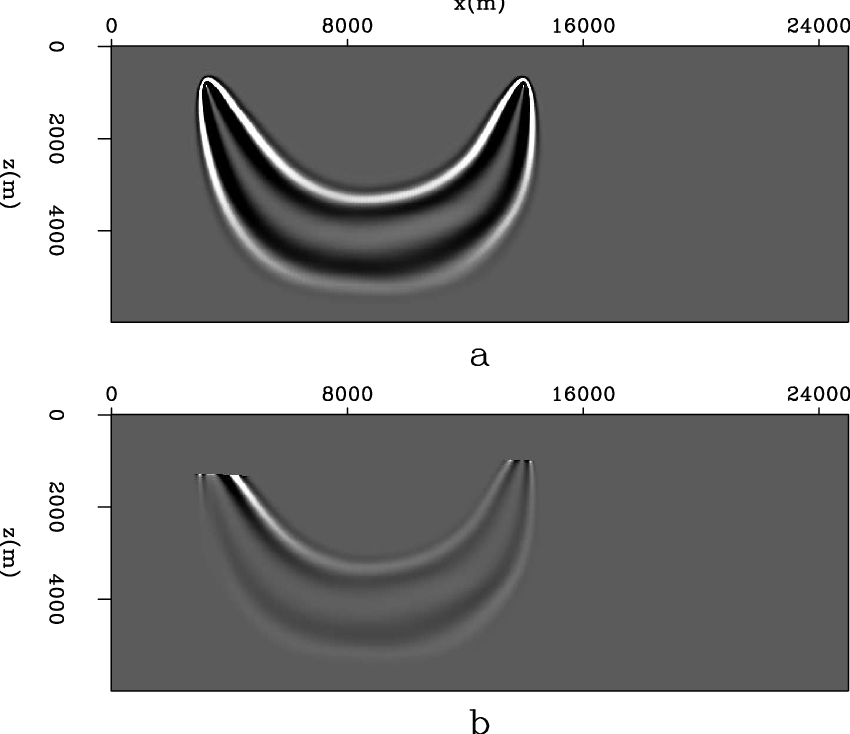|
|
|
|
Early-arrival waveform inversion for near-surface velocity and anisotropic parameters: modeling and sensitivity kernel analysis |
 and
and
 . Using this parametrization, equation 1 can be rewritten as follows:
. Using this parametrization, equation 1 can be rewritten as follows:

|
|---|
|
relimpp
Figure 7. Relative sensitivity kernel of parameter: a)  ; b)
; b)
 . Both figures are clipped at the same value.
. Both figures are clipped at the same value.
|
|
|
|
|
|
|
Early-arrival waveform inversion for near-surface velocity and anisotropic parameters: modeling and sensitivity kernel analysis |